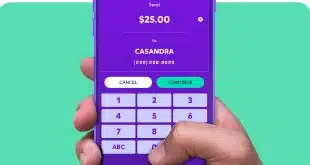Five years ago, Apple Inc. laid claim to offering one of the first smart phone-based mobile-payment services, and now some observers say Apple Pay, with an estimated 43% of iPhone owners using the service, may be poised to score a breakthrough. Apple Pay was announced with great fanfare Sept. 9, 2014, and launched six weeks later.
Despite the big-name notoriety of Apple and its tech cohorts offering their own mobile payments services, mobile wallets have not met the expectations widely held in 2014. And even now, tempered expectations may be in order. Mobile payments account for 2% or less of U.S. general-purchase card payments.
Awareness, however, far outpaces actual usage. It’s the power of the brand that has made Apple Pay part of the mainstream consciousness, says Jordan McKee, research director for customer experience and commerce at New York City-based 451 Research LLC. “It has served as a much-needed booster for the industry,” he says.
Others share that view. “The significance of Apple Pay is that it was, and still is, a catalyst to digitize payments in a secure manner,” says Krista Tedder, director of payments at Pleasanton, Calif.-based Javelin LLC. “Moving from the magnetic stripe to tokenized digital transactions moved the industry past the status quo.”

While Apple wasn’t the first to offer a mobile-payment service, its scale and brand recognition meant it was able to pull together a strong launch, Tedder says. Strong in 2014 meant 220,000 out of approximately 8 million U.S. merchant locations accepted contactless payments. Visa Inc.’s latest data found that 3.7 million merchant locations were chip-enabled. Most of the EMV-compatible point-of-sale terminals installed in the last few years also have contactless capability, but not all merchants have activated it.
Completing a POS transaction with an iPhone, and later the Apple Watch, was novel for the first few years of Apple Pay’s existence, says Gene Munster, managing partner at Minneapolis-based investor Loup Ventures. “It’s been a late bloomer,” Munster tells Digital Transactions News. “For the first three years it was largely a novelty and in the last two years, for many reasons, the flywheel has just gained momentum.”
The latest example of that is the introduction of Apple Card. This credit card, issued by Goldman Sachs Group Inc. with the Mastercard Inc. brand, is designed first for use with an iPhone. The physical card lacks an expiration date, card verification code, and account numbers. Users must get that information in the app.
Efforts to expand the number of issuers supporting the service have had an impact. From just five issuing banks and American Express Co. in 2014, Apple’s roster of supporting banks and credit unions has grown to more than 3,200 in the United States, according to Apple’s list published online Sept. 3.
Still, Apple faces challenges, Munster says, given that less than half of iPhone users have adopted the service. “The challenge is always getting a greater percentage of people to use it,” he says.
451 Research says 8% of consumers have tried Apple Pay over the past 90 days, according to its Q1 2019 Voice of the Connected User Landscape Survey.
Others says Apple Pay’s potential is building strength. “Apple Pay has particularly strong potential to streamline the checkout flow in digital commerce,” McKee says. “There is where real problems, such as false-positive declines and cart abandonment, exist and where Apple Pay has a compelling value proposition.”
As all other mobile-payment services have learned, moving consumer habits away from cards is tough, Tedder says. “Significant growth will occur in mobile payments when the pain of using plastic is more painful than mobile,” she says. “Interchange models, fraud losses, and consumer acceptance all need to improve for growth to occur.”




